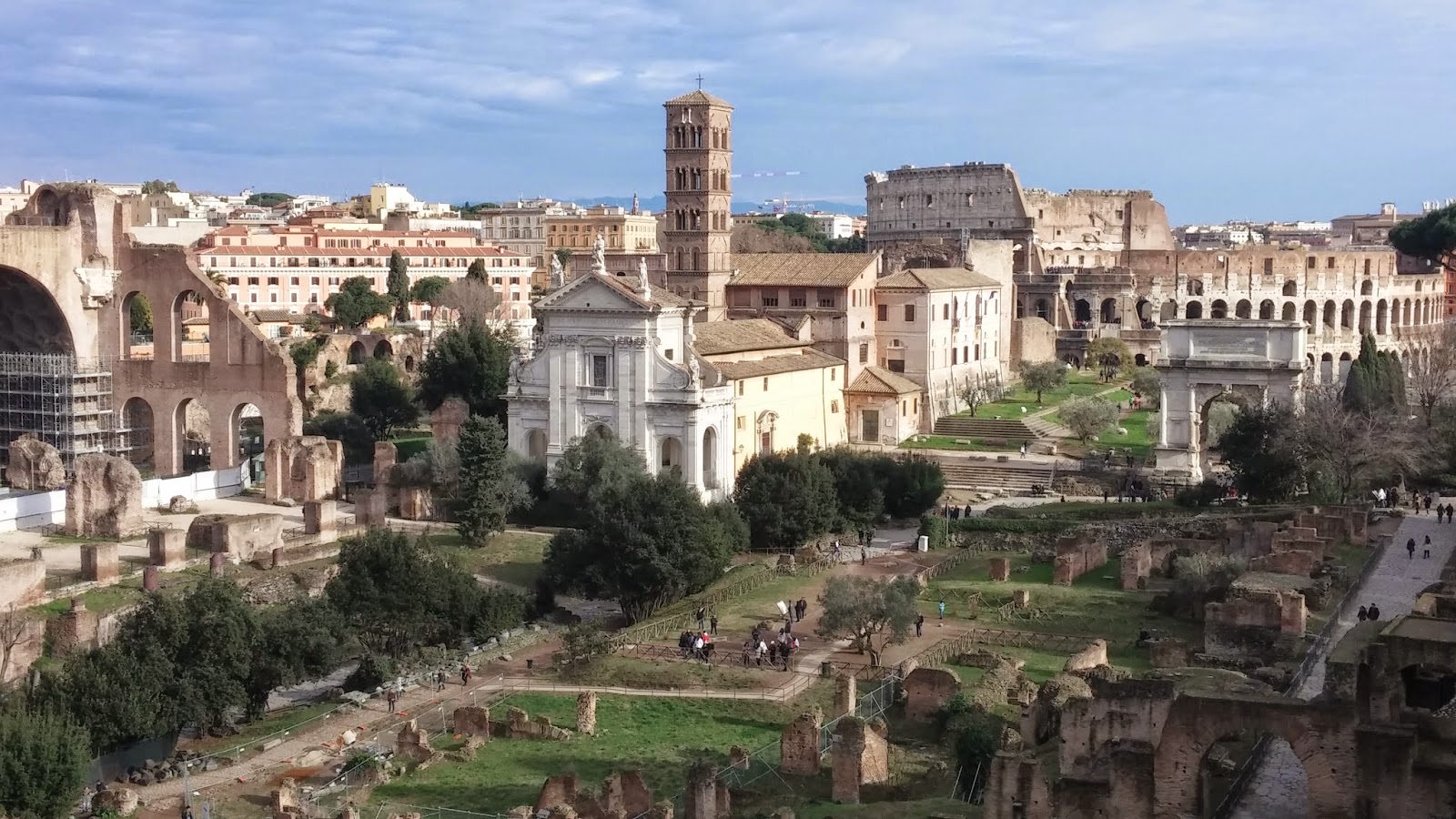Our group began the day at the Vatican Museum. Although the museum did not open until
9:00am, we left the hotel at 8:00am in order to avoid the lines. Unfortunately, everyone else had the same
idea so we ended up waiting in line until 9:30am, while being bombarded by
a constant stream postcards and “self-sticks”.
Once we entered the Vatican Museum, we dispersed into smaller groups. In the museum,
we meandered through several rooms of Egyptian reliefs and relics, the oldest
dating back to 2300 B.C. We also saw a
large display of Greek and Roman Statues, which included the most famous Greek statue
from ancient Rome, the Laocoon. After
the Egyptian and Roman rooms, we traveled down a hallway lined with beautiful,
large tapestries and another hallway, entitled “Map Gallery”, where we saw
several murals of maps from the 16th century.
Next, we entered the Rafael rooms. In these rooms, the walls and ceilings were
covered with murals painted by Rafael.
The most iconic mural we saw was “The School of Athens”. This painting depicts Plato and Aristotle in
the center of the world’s greatest minds, flanked by the thinkers on the left
and the scientists on the right.
After a quick walk through several modern art rooms, we reached
the final destination of everyone’s tour of the Vatican Museum, the Sistine
Chapel. It is almost impossible to put
the grandeur of the Sistine Chapel into words.
All I can say is that it is simply breathtaking. As I
looked up, I could not imagine the physical toll Michelangelo had
to endure while painting this magnificent ceiling.
Following our tour of the Vatican Museum, we all met in line
as we waited to enter St. Peter’s Cathedral.
As we stood in line for about an hour, we all enjoyed our last moments
of warm sunshine because we knew that the cold, Spokane winter was only a few
days away. Once we made it past
security, we began our climb up St. Peter’s Dome. The climb was cramped and crowded, as Rick
Steves said it would be. At one point,
the stairs spiraled so tightly that there was only a rope running through the
middle of the spiral that could be used for stability. Despite the trying climb, we all made it to
the top. The view was spectacular. I could clearly see the key-hole design of
St. Peter’s Square and could faintly make out the Coliseum in the distance.
Once we had taken several laps around the top of the dome,
we descended down the stairs and into St. Peter’s Cathedral. Highlights of the cathedral included Michelangelo’s
Pieta and St. Peter’s Tomb. This was not
the first time in the cathedral for Linnea, Hannah, Evie, Sarah M., Evan B., and
I. The six of us had the opportunity to
attend mass at the cathedral on the previous day. As we were waiting for the service to start,
we were approached by an usher and asked to help at the service. Evan did a flawless job reading a Bible
passage in English, and the rest of us successfully delivered the communion
offering to the priest while Dr. Pierce looked on like a proud mother hen. It was definitely a once in a lifetime opportunity
that I will never forget.
After completing our visit at St. Peter’s Cathedral, we all
relaxed at the hotel until our night walk that evening. Although the night walk was long, it gave us
the opportunity to see many of Rome’s great sights lit up at night while also
adding the extra steps required to reach the 13 mile total distance covered
that day. Needless to say, we all fell
asleep as soon as our heads hit the pillow that night.
It was easily one of our busiest and most memorable days.









































